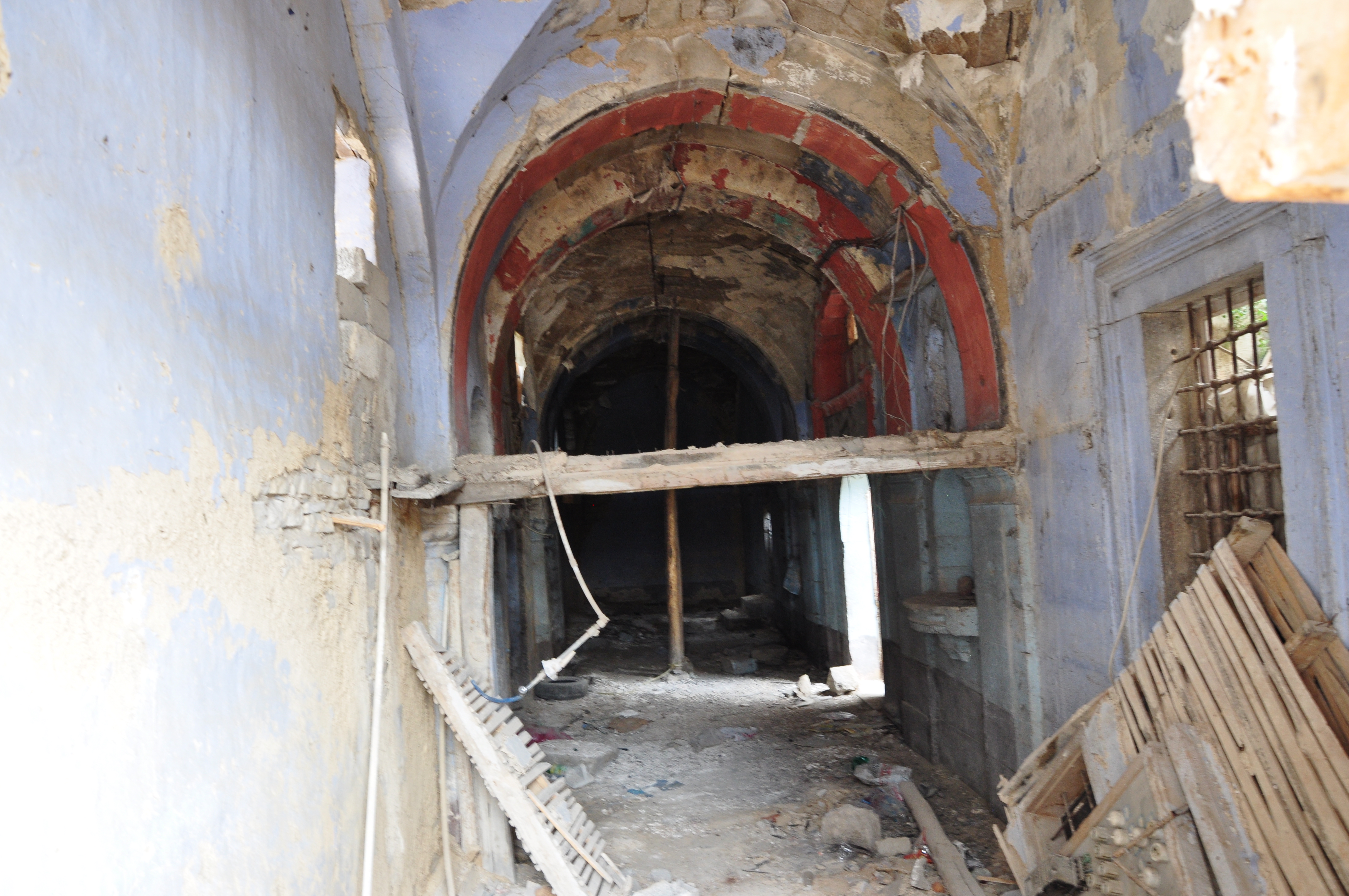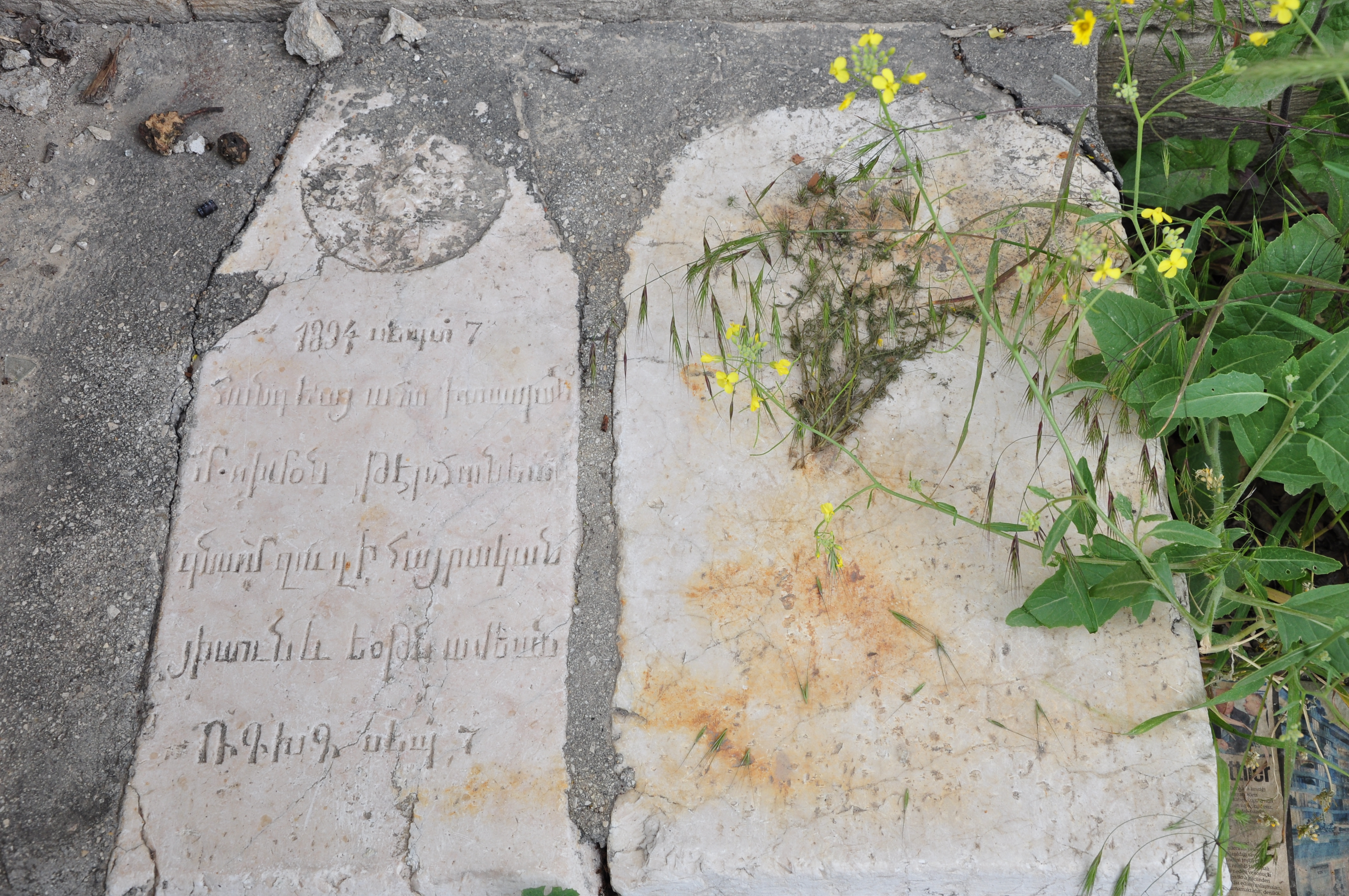During my numerous trips to our historic homeland, I have witnessed tragic and quite common sites found in the remnants of our ancient churches, re-purposed into barns and mosques, and many times even outright destroyed. In rare cases, however, one finds something different happening.
In 2013, while traveling from Malatia [Malatya] to Gesaria [Kayseri], I had occasion to stop in Gurin [Gürün]. The town of Gurin in the province of Sepasia [Sivas] was home to a significant Armenian population on the eve of the Armenian Genocide—some estimate as many as 10,000.
There were known to be four Apostolic, two Catholic and three Protestant churches in Gurin. In 2013, the remains of one of the churches were still prominent, though in a precarious condition. A number of historic buildings in the area of the church had been restored, and representatives from the municipality indicated they also desired to repair the Armenian church.
The church itself has been thought to be the Apostolic mother church—Soorp Asdvadzadzin, built between 1810 and 1815, though some have attributed it as the main Catholic church instead.

The descriptions of Sp. Asdvadzadzin do seem to match the current structure. It is near the Grand Mosque (Ulu Cami), contains three altars and a large narthex through the west entrance. The church had high arches, but no dome.
After 1915, the church has served as a prison, warehouse, and movie theatre. The stated goal of the planned restoration was to convert the structure into a museum or cultural center.
Two weeks ago, I again passed through Gurin and viewed the church. It is now in the process of restoration, and it appears the work being done is quite serious. As it was an active construction site, I was unable to enter the church, but I took a number of photographs.
In my initial visit six years ago, I was able to photograph the tombstone of one Simon Terjanian, dated September 7, 1894. Unfortunately, the stone was no longer on the church grounds, and the workers did not know its fate. One can only hope that the stone had been removed for preservation before the reconstruction work had begun. Though if past experience is any indication, it is more likely that the stone was destroyed.

One may find solace in the restoration of this church, unlike most Armenian churches in Turkey. Yet that is not enough. If in its new life, the building will be converted to a cultural center, it must also reflect the culture of the church, that of the Armenians of Gurin. I cannot say if there are any Armenians remaining in Gurin, but the odds are high that there are. They should be able to feel that the church is their home–a place to congregate, learn and educate others about Armenian presence on that land, in that town. There are many sources that could be made available through the center, including the 800-page tome Badmakirk Giurini [Beirut, Sevan Press, 1974].
I am not pretending that such a suggestion is a solution, but it is better than a cynical attempt at extracting tourism dollars from Armenians yearning to see their ancestral homeland. There are Armenians living in our homeland, and any effort at restoring Armenian cultural sites should reflect their needs.


Lately when I read about church destruction in Western Armenia, I cry a little.
Me too. Every one of these so-called “restorations” is simply destruction under another name. “Restoration” is more than just the physical destruction of evidence of the history of these Armenian cultural remains (they are left looking like newly-constructed buildings, scrubbed clean of the crimes they have witnessed and survived, crimes which their “restorers” still deny happened). The churches are “muzealized”: no longer are they a dirty little undocumented secret, part of that unmentionable “A” word from Turkey’s past, left out of tourist brochures, hidden down side streets where only dedicated seekers tread. Now they are transformed, made safe and palatable in order to be incorporated into everyday Turkish life and to be presented as evidence of Turkish tolerance and multiculturalism (and in most cases with permanently locked doors, though loss of free access is the least of the losses).
Another good Article George! I remember, George when you came to the St. Sarkis Armenian Church in Dearborn; couple of years ago.
excellent- awesome God bless- we are everywhere and there-to return some day
Thank you for these photos and bits of history! My family was from Gurun. It is fascinating to see and read about what was there and what is happening now. I would like to know more about how this restoration was arranged. Your article has inspired me to go there someday.
Compare the 2013 and 2019 photos and note the demolition of the western end of the north side of the church at upper floor level and the demolition of the western end of the south side of the church at upper floor level together with the demolition of all the surviving west facade at upper floor level and the demolition of the arch at the left side of west facade at entrance level. Extensive demolition of original fabric is typical of the sort of devastation that is inflicted on historical buildings in Turkey during their “restoration”. Things are not repaired, they are demolished and built new, most often poorly and rarely matching what it originally looked like. It is easier that way, the project’s budget can be inflated and it can be completed quickly without the need to employ expensive and hard-to-find specialist craftsmen.
Thank you George Aghjayan for your priceless contribution to our heritage. My wife was actually born in Gurin. The survivors of her family voluntarily left their ancestral home – in fact, escaped to Aleppo under the pretence of “ visiting “ family members , leaving behind property and possessions finally settling in Beirut Lebanon. There seems to be a slight glimmer of hope that things will gradually change and
A tiny fraction of the thousands of our monuments may be restored. It’s a small step, yet better than none!
Thank you Mr.Aghjayan for posting these recent photos. When I visited Gurin in 1992, the church was still standing and I have 2 photos from 1992, as well as many others of Gurin, including the old bridge built by the Terjantsis when they were deported to Gurin after the Russian conquest of the Caucasus. It is interesting that in 1894, the Terjantsis had already adopted the Polsetsi’s orthograph of the name of Simon Terjanian instead of the original: Տէրջանեան.
I would be happy to share my 1992 Gurin photos.
hi,I was born in gurun 1945 now living in UK. only thing i would like to add what i did hear, when i was about 9-11 years old from my old uncle he was a 15 years old boy during Armenian deportation 1915. apparently There were a lot of unrest, and several Armenians groups were taken them self to local mountains operating as guerrillas agains the state. My uncle was an ordinary uneducated farmer (married
to a Armenian girl) his description of the situation in gurun at that time was just like beginning of syrian civil suddenly hundreds of years living together in peace, Muslim against christians.he used to be in tears.
I am half Armenian (my father’s side) My Dad’s parents were from Gurin (Vranian and D’Aprahamian (?sp). They arrived in America through Ellis Island in 1905 and with 3 other Armenian families settled in Richmond, Va. The first generation of 7 siblings grew up with their widowed mother, Rosa, with a positive attitude and with love, creativity, and good humored work ethic had productive lives integrating into the American Melting Pot. They did not feel sorry for themselves, remembered the atrocities occurring before the 1915-1917 Holocaust, and simply embedded in their children a sense of pride and amazement that many of Armenian Heritage seem to have. Today the great and great-great grandchildren still feel that special joy and toughness. Thank you for your account of Gurin. It and the comments were very informative.